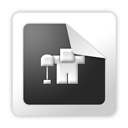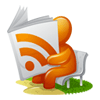
1) CPU Slot
2) RAM Slot
3) Graphic Card Slot
4) PCI Slot
5) Serial ATA
6) IDE ports
7) FDD port
8) Power Connector
9) PS/2 ports
10) USB ports
11) COM and LPT ports
12) Bios chip
1 - CPU Slot
This is where the CPU is Kept. Is an electrical component that attaches to a printed circuit board (PCB) and is designed to house a microprocessor. It is a special type of integrated circuit socket designed for very high pin counts. A CPU socket provides many functions, including providing a physical structure to support the CPU, providing support for a heatsink, facilitating replacement (as well as reducing cost) and most importantly forming an electrical interface both with the CPU and the PCB. CPU sockets can most often be found in most desktop and server computers.
2 - RAM Slots
This slots where RAM DIMMs go. They have to vary a certain type of RAM, DDR RAM.
3 - Graphic Card Slots
AGP is a slot where only AGP based cards are compatible. And only graphics card can called AGP. This is a graphic dedicated slot purposely built to hold AGP cards.
PCI Express slot is also for graphic cards, and only compatible graphic cards can used in this slot.
4 - PCI Slots
PCI slots where expansion cards go. PCI is a newer version of expansion slots, it replaces the ISA slots from older versions of motherboards.
5 - Serial ATA
a newer port for hard disk or CD/DVD-ROMs
6 - IDE ports
The two long ports are IDE ports. This is where Hard Drives and CD-ROMs are plug-in.
7 - FDD port
The FDD port is where your small 3 1/2 disk drive plugs into the motherboard.
8 - Power connectors
The Motherboard needs electricity to power the CPU, expanzion cards and motherboard itself.
9 - PS/2 ports
PS/2 ports are where your mouse and keyboard plug in.
10 - USB ports(backpanel connector)
Newly created devices like mouse, printer and keyboard can now be ported on USB ports. It is a much faster way of transferring data.
11 - COM and LPT ports
Communication and parallel ports go here. Traditionally your mouse would go into a COM port while a printer would go into LPT port. These have been outdated by new technologies.
12 - Bios chip
The BIOS chip is like the memory of the motherboard. It stores the vital information like what size hard drive you have, times and date etc. A VERY important chip.















0 comments:
Post a Comment